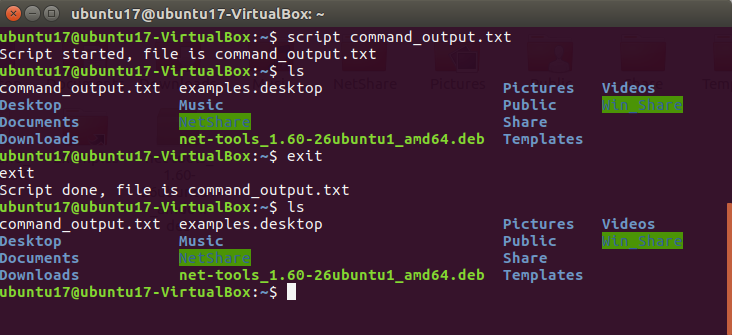
- SHOW HIDDEN FILES TERMINAL UBUNTU HOW TO
- SHOW HIDDEN FILES TERMINAL UBUNTU CODE
- SHOW HIDDEN FILES TERMINAL UBUNTU ZIP
- SHOW HIDDEN FILES TERMINAL UBUNTU FREE
- SHOW HIDDEN FILES TERMINAL UBUNTU WINDOWS
Also see: man ls -S sort by file size If you want to sort in reverse order, just add -r switch.
SHOW HIDDEN FILES TERMINAL UBUNTU ZIP
Binary entities, like zip files and executable programs, are indicated swith an asterisk ( *). Simply use something like: ls -lS /path/to/folder/ Capital S. Options and file arguments can be intermixed arbitrarily, as usual. The ‘ls’ program lists information about files (of any type, including directories). If you're color blind or on a display that doesn't provide colors, you can alternately use the -classify option: $ pwdĪs you can see, folders are given a trailing slash ( /) to denote that they are steps within your file system. Ls command options -a and -l can be used with Ubuntu ls command to show hidden files in Ubuntu using terminal command line. If you don't see those colors, you can try ls -color.
SHOW HIDDEN FILES TERMINAL UBUNTU HOW TO
Some Linux distributions have some nice colors set up so that all folders are blue and the files are white and binary files are pink or green, and so on. 58 Distro Ubuntu 10.10 Maverick Meerkat How to show hidden files and folders in console In the GUI, pressing Ctrl+H could display the hidden files and folders. You may notice that it's hard to tell a file from a folder. Files and folders and how to tell the difference Once you start moving around within your computer, you can use that information to create shortcuts for yourself or to increase the specificity of your paths. Going there with the GUI and pressing CTRL+A (selecting all files) it counts 5058 images. That is, you are in a folder in another folder. 1 I have a directory with a bunch of images. The two dots indicate that you can move back from this location.
SHOW HIDDEN FILES TERMINAL UBUNTU CODE
On Mac, select Code Preferences Settings.
SHOW HIDDEN FILES TERMINAL UBUNTU WINDOWS
git directories in Visual Studio Code, do the following: On Windows or Linux, select File Preferences Settings. Overview The Linux command line is a text interface to your computer. Search file.exclude and hover over the hidden files you want to see and click the ' X '. The Linux command line for beginners Overview A brief history lesson Opening a terminal Creating folders and files Moving and manipulating files A bit of plumbing The command line and the superuser Hidden files Conclusion 1. The single dot is actually a meta location meaning the folder you are currently in. On Windows, in VS Code, go to File > Preferences > Settings.
SHOW HIDDEN FILES TERMINAL UBUNTU FREE

For example, the -a option will show all files and folders, including hidden ones. Clicking the icon will show a drop-down list ensure the “ Show Hidden Files” option is checked. The ls command has many options that, when passed, affect the output.

Using the File ManagerĪnother way to unhide the hidden files in Ubuntu is using the “ Hamburger icon” from the top menu toolbar of the directory. In Linux operating systems (Debian, Ubuntu, Centos etc) hidden files are mostly created by the operating system. To show the hidden files in Ubuntu, use the command ls -a command or the other options of the ls command. Note: The “ Ctrl+H” shortcut key is used to show/hide files. To do so, navigate to the directory where you want to search for the hidden files and press “ CTRL+H”:īefore Using the shortcut key, the files are hidden:Īfter using the shortcut key, it is observed that the hidden files are displayed:

I have the suspsect that the 'missing files' are images, otherwise a program that I'm using on it would have returned an error message (and it counts 5060 files too). We can show the hidden files in a directory by pressing the “ CTRL + H” shortcut key. 1 I have a directory with a bunch of images. In this guide, we will discuss the below methods to show the hidden files in Linux: Method 1: Show Hidden Files Using CLI The easiest way to show the list of files available in a directory is using the ls command. Let’s start with the first one: Using Shortcut Key In Ubuntu, several ways can be used to unhide the file. There are two ways to show hidden files via GUI that are listed below and are explained as well: The GUI of Ubuntu can also be utilized to show hidden files.


 0 kommentar(er)
0 kommentar(er)
